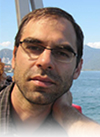 |
MATHIEU BLANCHETTE
Associate Professor
School of Computer Science
McGill University
Montreal, Quebec, Canada
> Click here for biography <
Know Thy Ancestors to Know Thyself: Improving Our Understanding of the Human Genome Using Paleogenomics
I will first discuss how the genomes of ancestral mammalian species can be reconstructed with surprisingly high accuracy from the genomes of extant species. I will then present how inferred ancestral sequences can be used to improve the detection of ancient evolutionary events such as transposable element and pseudogene insertions that have shaped mammalian genomes. This information can be exploited by statistical and machine learning algorithms to improve the accuracy of transcription factor binding site and micro-RNA target site prediction. |
|
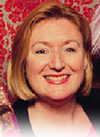 |
JANE CARLTON
Professor
Department of Biology
New York University, USA
> Click here for biography <
Harnessing Genomics to Study the Global Public Health Burden of Malaria
Malaria is a devastating disease that caused 0.5 million deaths and ~214 million cases in 2015, and more than half the world’s population is at risk of the disease. In the Center for the Study of Complex Malaria in India, one of ten Centers that form a network across the malarious world, we harness the tools of genomics and bioinformatics to study which species and their genotypes infect subjects temporally and spatially, and how this variation causes changes in disease phenotype and transmission. Our research provides insights into the phylogeography of different malaria parasite species, as well as improved methods for their control. |
|
 |
ALED EDWARDS
Professor, Molecular Genetics
CEO, Structural Genomics Consortium (SGC)
Uniersity of Toronto, Canada
> Click here for biography <
Open Science: From Computational Biology to the Real World |
|
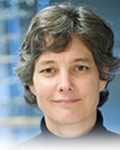 |
ELIZABETH EDWARDS
Professor
Dept. of Chemical Engineering and Applied Chemistry
University of Toronto
> Click here for biography <
Metagenomics of Microbial Dechlorinating Consortia
Groundwater contamination is a serious threat to global health and prosperity. Petroleum hydrocarbons, industrial solvents and metals are some of the most frequent culprits. Some microbes have evolved and adapted to transform or detoxify contaminants in the environment. Chlorinated solvents such a trichloroethene and tetrachloroethene are widely used as industrial degreasers, dry-cleaning agents and precursors in chemical synthesis – and thus very common groundwater contaminants. Owing to their toxicity, even small spills render groundwater unsuitable for use, and cleanup is typically a costly and long-term undertaking. A fascinating group of subsurface microorganisms, collectively referred to as organohalide-respiring bacteria, are significant players in the global halogen cycle. Certain species, such as Dehalococcoides, can dechlorinate the major dry-cleaning solvent tetrachloroethene and the common industrial solvent trichloroethene to the benign product ethene. Remarkably, these organisms obtain energy for growth from dechlorination and several successful demonstrations of bioaugmentation, where an aquifer is inoculated with culture, have lead to the development of a commercial market for such dechlorinating cultures. Through metagenome investigations in our own lab and elsewhere, we are shedding light on these dynamics and function of these remarkable, ubiquitous, microbial communities. |
|
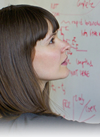 |
JENNIFER GARDY
Assistant Professor
School of Population and Public Health
University of British Columbia, Canada
Infectious Disease Genomics: Bioinformatics Challenges
In the last five years, genome sequencing has completely changed how public health agencies investigate outbreaks and epidemics of infectious disease. Real-time sequencing of pathogens is being used for everything from rapid diagnostics to inferring individual transmission events, and while the sequencing is straightforward, the associated bioinformatics and interpretation is not. In this talk, I will cover some of the ways genomics is being used in public health and the informatics challenges that this new field of “genomic epidemiology” is facing. |
|
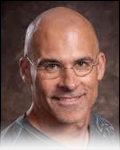 |
TIMOTHY R. HUGHES
Professor
Donnelly Centre for Cellular and Biomolecular Research
University of Toronto, Canada
> Click here for biography <
Decoding Gen Regulation
Understanding how regulatory sequence works is one of the greatest challenges facing molecular biology, and the next major hurdle in human genetics. There is now a wealth of data on individual genome sequences, chromatin profiles, and expression outputs, but the details of how cells identify regulatory sequences, or how their functions are exerted, are surprisingly difficult to decipher. We aim to solve this problem by determining and compiling motifs for transcription factors and RNA binding proteins, and developing computational models of regulatory sequence identity and function. |
|
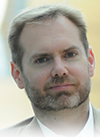 |
STEVEN J.M. JONES
Professor, FRSC, FCAHS
BC Cancer Agency, Canada
> Click here for biography <
Genomic Analysis of Cancer Genomes to Aid in Clinical Decision Making
We are using genomic and transcriptomic analysis of patient tumours to support cancer treatment decision-making. This involves a large number of computational analysis to be conducted and consolidated. Ultimately, these analyses will need to indicate the sensitivity or resistance to therapies of the tumour that could be considered by a clinician. I will discuss the computational pipeline that has been established to move toward this goal. |
|
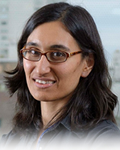 |
CHRISTINA LESLIE
Computational Biologist
Memorial Sloan Kettering Cancer Center
New York, USA
> Click here for biography <
Decoding Gene Regulatory Programs in Cellular Differentiation
In order to differentiate into distinct lineages, multipotent cells must undergo large-scale remodeling of chromatin and orchestrate dramatic gene expression changes. How do multipotent cells encode the potential for multiple cell fates, and how can we decipher the transcriptional programs that carry out cell state transitions in commitment to specific fates? To address these questions, we carried out an integrative computational analysis of enhancer landscape and gene expression dynamics in hematopoietic differentiation using DNase-seq, histone mark ChIP-seq, and RNA-seq. We examined how early establishment of enhancers and complex regulatory locus control together govern gene expression changes in cell state transitions. We found that high complexity genes – i.e. those with a large total number of DNase-mapped enhancers across the lineage – differ architecturally and functionally from low complexity genes, achieve larger expression changes, and are enriched for both cell-type specific and “transition” enhancers, which are established in hematopoietic stem and progenitor cells (HSPCs) and maintained in one differentiated cell fate but lost in others. We then developed a quantitative model to predict gene expression changes from the DNA sequence content and lineage history of active enhancers. Our method accurately predicts expression changes for high complexity genes during differentiation, suggests a novel mechanistic role for PU.1 at transition peaks in B cell specification, and can be used to improve assignment of enhancers to genes. We are using these methods to decode normal cell state transitions in T lymphocyte differentiation and aberrant cell states in cancer. |
| |
BIOGRAPHIES
|
MATHIEU BLANCHETTE
After completing his Ph.D. (U. of Washington, 2002) and postdoc (UC Santa Cruz, 2003), Mathieu joined the School of Computer Science at McGill and founded the Computational Genomics Lab. His team and him have published in more than 70 publications in the fields of genome evolution, sequence analysis, and gene regulation. Recently elected member of the College of Scholar of the Canadian Royal Society, he was a Sloan Fellow (2009), and received the Outstanding Young Computer Scientist Researcher Prize from the Canadian Association for Computer Science (2012), and the Chris Overton prize (2006).
top  |
JANE CARLTON
Jane Carlton is a Professor of Biology and Director of the Center for Genomics and Systems Biology at New York University. She received her PhD in Genetics at the University of Edinburgh, and has worked at several genomics institutions in the U.S., including NCBI at the National Institutes of Health (NIH) in Bethesda, and the sequencing center TIGR, founded by J. Craig Venter. Professor Carlton is passionate about genomics and the power it has to revolutionize the study of parasites. Her research involves comparative genomics of different species of malaria parasites, and the sexually transmitted protozoan Trichomonas vaginalis. She has a keen interest in global public health through her collaborations with scientists in India, first as the PI of a Fogarty Global Infectious Disease training and research grant, with exchange of trainees between New Delhi and New York, and now as Program Director of a 7 year “Center for the Study of Complex Malaria in India”, one of 10 International Centers of Excellence in Malaria Research funded by NIH. In 2013 she was awarded an NYU Grand Challenge project “Mapping the New York City Metagenome”, which uses next generation sequencing to characterize, map and ultimately track microbes on paper currency, bicycles and sewage circulating in the city. She has published more than 100 articles and reviews, and her work has been profiled by CNN, BBC, The Economist, USA Today and the Wall Street Journal. She received the American Society of Parasitologists’ Stoll-Stunkard Memorial Award in 2010, and was elected a Fellow of the American Association for the Advancement of Science in 2012. Professor Carlton’s ultimate goal is to cultivate and expand the science and use of genomics to improve global health.
top
 |
ALED EDWARDS
Aled Edwards is CEO of the Structural Genomics Consortium (SGC), a public-private partnership that generates open-source research tools to support drug discovery.
Over the years, Al and his teams at the SGC have contributed ~15% of all the available structural information for human proteins in the public domain. The SGC and its collaborators in the pharmaceutical industry are using this structural information to generate and make available chemical probes for members of several human protein families. These probes are being tested in patient derived cells and tissue within an expanding open source network of clinical institutions. At least 20 clinical trials of first-in-class medicines have been launched based on SGC research.
Al did his undergraduate and graduate work at McGill University and did his post-doctoral work at Stanford University with Roger Kornberg, where he initiated the structural biology of RNA polymerase II.
top
 |
ELIZABETH A. EDWARDS
Elizabeth A. Edwards, PhD, P. Eng., Professor, Department of Chemical Engineering and Applied Chemistry, and Cell and Systems Biology (Status only), University of Toronto. Dr. Elizabeth Edwards holds Bachelor’s and Master’s degrees in Chemical Engineering from McGill University, Montreal, and a PhD degree (1993) in Civil and Environmental Engineering from Stanford University. She is internationally known for her work on anaerobic bioremediation, the application of molecular biology and metagenomics to uncover novel microbial processes, and the transition of laboratory research into commercial practice to develop bioremediation and bioaugmentation strategies for groundwater pollutants. She has received several prestigious awards including an NSERC Synergy Award for Innovation with Geosyntec Consultants (2009), a Killam Research Fellowship (2008), a Premier’s Research Excellence Award (2003), and an NSERC Women’s Faculty Award (1995). She is a fellow of the AAAS (2011), and was inducted into the Canadian Academy of Engineering (2011) and the Royal Society of Canada (2012). She is also the founding director of BioZone, a Centre for Applied Bioscience and Bioengineering Research and a Tier 1 Canada Research Chair in Anaerobic Biotechnology.
top

|
JENNIFER GARDY
Dr. Jennifer Gardy is an Assistant Professor in the School of Population and Public Health at the University of British Columbia, where she holds a Canada Research Chair in Public Health Genomics. Based at the British Columbia Centre for Disease Control, her lab uses microbial genomics, phylogenetics, and bioinformatics to understand the transmission and epidemiology of infectious diseases, including tuberculosis, influenza, and measles. Her group was the first to use genome sequencing to reconstruct a large outbreak of tuberculosis and she is continuing to apply this novel technique to other outbreak scenarios and to routine public health microbiology. Her group is also interested in how information visualization techniques can be used in public health to better communicate complex data to stakeholders. Before joining BCCDC in 2009, Jennifer’s graduate training was in computational biology. She completed her PhD in 2006 under Fiona Brinkman at Simon Fraser University, where she developed the PSORT-B tool for bacterial protein subcellular localization prediction. She then spent three years as a postdoctoral fellow at UBC in Bob Hancock’s lab, where she developed the Cerebral Cytoscape plugin for network visualization and where she contributed to InnateDB, a data warehouse for systems biology investigations of the innate immune system.
Infectious disease genomics: bioinformatics challenges: Advances in DNA sequencing technology are dramatically changing public health microbiology. Sequencing-based diagnostics can give us a complete picture of a patient’s infection in just a few hours, while genomic investigations of disease outbreaks are allowing us to reconstruct transmission events and understand the movement of a pathogen through a population to a degree never before possible. This new era isn’t without its informatics challenges, though, from understanding how much we can trust the genomic results to accreditation of software pipelines for clinical use. This talk will introduce some the ways in which genomics is being used in public health, along with the bioinformatics issues facing the medical microbiology genomics community.
top
 |
TIMOTHY R. HUGHES
Timothy R. Hughes is a Professor in at the at the University of Toronto. He studied engineering and music at the University of Iowa, and received his Ph.D. in Cell and Molecular Biology from Baylor College of Medicine, working on telomere replication. He did his postdoctoral work at Rosetta Inpharmatics (now Merck) working on microarray technology and its applications, including the development of ink-jet arrays now available from Agilent. Since moving to Toronto in 2001, Dr. Hughes has been the recipient of a Canada Research Chair in Genome Biology, the Ontario Premier’s Research Excellence Award, the Terry Fox Young Investigator award, and an HHMI foreign scholarship. He has authored or co-authored over 100 manuscripts, and is a scholar of the Canadian Institutes For Advanced Research. His laboratory has worked in gene regulation, systems biology, RNA processing, genome sequencing, and computational biology, and has a fundamental goal of understanding how the genome sequence is interpreted by the cell.
top |
STEVEN J.M. JONES
Dr. Jones gained his PhD at the Sanger Institute, Cambridge, UK in 1999, where he was involved in the C. elegans genome project. Currently, he is Head of Bioinformatics and Associate Director of the Genome Sciences Centre at the BC Cancer Agency in Vancouver. Dr. Jones has played a role in numerous other genome projects, including that of the human, mouse, rat, bovine, fruitfly and the SARS coronavirus.
Dr. Jones major research focus is in the computational analysis of DNA sequence and the analysis of genomic and transcriptomic data. In healthcare research, he has applied next generation DNA sequencing technology to detect mutations arising in both patient samples and in cancer cell lines in various cancer types and under the influence of different therapeutics. A key goal is to develop bioinformatic approaches to predict the most efficacious therapies from patient tumour samples to help guide clinical decision making.
Amongst Dr. Jones many and varied honours and awards he is a Fellow of the Royal Society of Canada as well as the Canadian Academy of Health Sciences. He has been invited to give over 120 presentations, nationally and internationally, is an author on over 300 peer reviewed publications and is Principal Investigator and co-applicant on grants totaling over $97 million.
top |
CHRISTINA LESLIE
Christina Leslie did her undergraduate degree in Pure and Applied Mathematics at the University of Waterloo in Canada. She was awarded an NSERC 1967 Science and Engineering Fellowship for graduate study and did a PhD in Mathematics at the University of California, Berkeley, where her thesis work dealt with differential geometry and representation theory. She won an NSERC Postdoctoral Fellowship and did her postdoctoral training in the Mathematics Department at Columbia University in 1999-2000. She then joined the faculty of the Computer Science Department and later the Center for Computational Learning Systems at Columbia University, where she began to work in computational biology and machine learning and became the principal investigator leading the Computational Biology Group. In 2007, she moved her lab to the Computational Biology program of Memorial Sloan Kettering Cancer Center, where she is currently an Associate Member. Dr. Leslie's research group uses computational methods to study the regulation of gene expression in mammalian cells and the dysregulation of expression programs in cancer. She is well known for developing machine learning approaches – algorithms for learning predictive models from data – for analysis of high-throughput biological data, especially from next-generation sequencing. Focus areas in the lab include dissecting transcriptional and epigenetic programs in differentiation, microRNA-mediated gene regulation, alternative cleavage and polyadenylation, and integrative analysis of tumor data sets. |

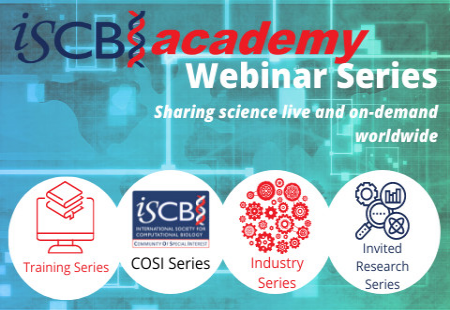

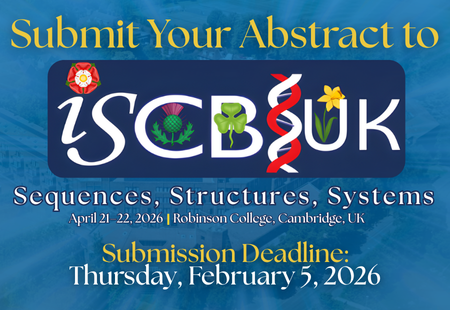
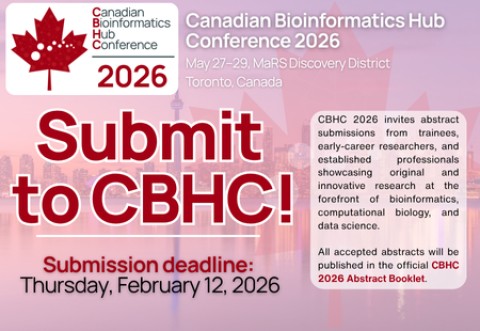
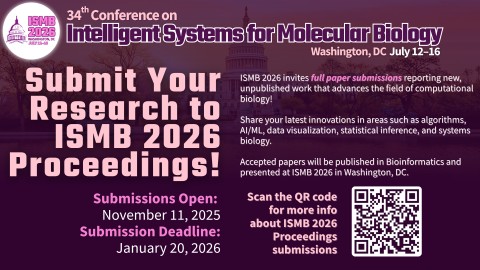
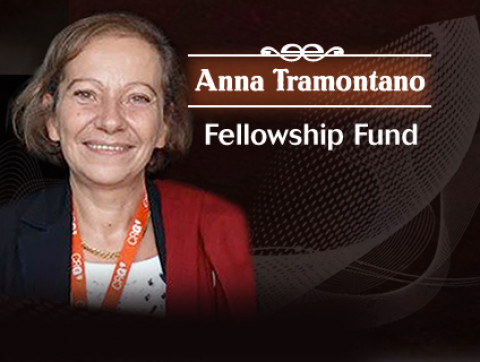
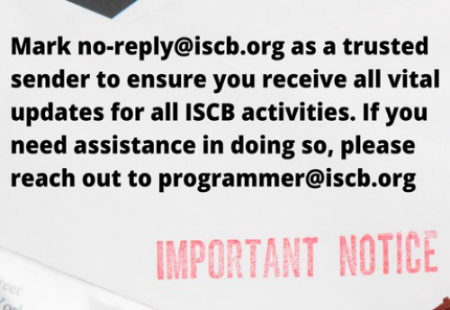















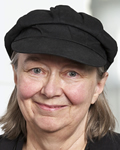
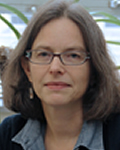
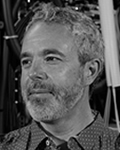
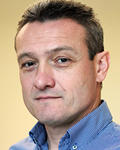

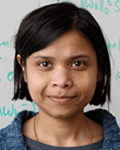
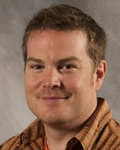
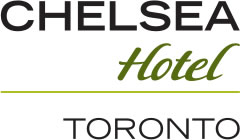









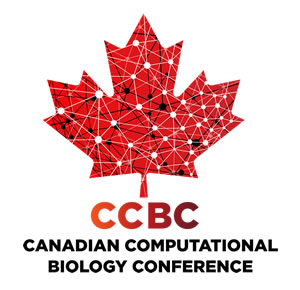 Over the past 18 months, the Bioinformatics/Computational Biology (B/CB) Advisory Committee has worked closely with research funders to develop a strategic framework with a view to building a fully integrated Canadian B/CB capacity across the life sciences. One of the key items that has already emerged from this consultative process was the interest and strong willingness to organize a regularly scheduled Canadian Computational Conference. Given the fortuitous planning of the ISMB-sponsored regional GLBIO2016 conference in Toronto, select members of the B/CB advisory group were delighted to be invited to co-organize the first Canadian Computational Biology Conference with the Great Lakes Bioinformatics (GLBIO) conference for 2016.
Over the past 18 months, the Bioinformatics/Computational Biology (B/CB) Advisory Committee has worked closely with research funders to develop a strategic framework with a view to building a fully integrated Canadian B/CB capacity across the life sciences. One of the key items that has already emerged from this consultative process was the interest and strong willingness to organize a regularly scheduled Canadian Computational Conference. Given the fortuitous planning of the ISMB-sponsored regional GLBIO2016 conference in Toronto, select members of the B/CB advisory group were delighted to be invited to co-organize the first Canadian Computational Biology Conference with the Great Lakes Bioinformatics (GLBIO) conference for 2016. 





